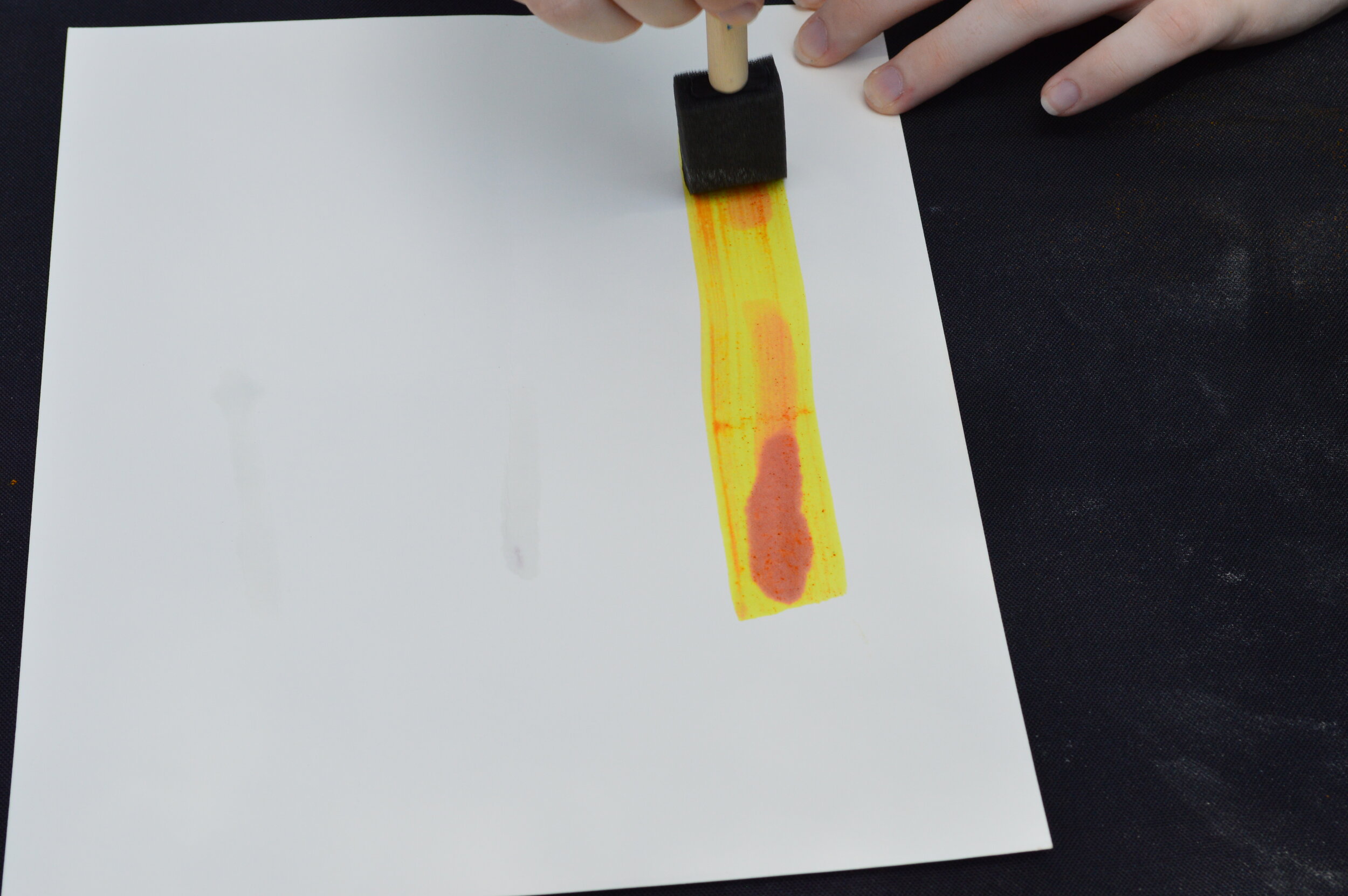Invisible Ink
Who wouldn’t want to write secret invisible messages like a spy? Create amazing messages while learning about the pH scale and chemistry!
Standards Included: PS1B: Chemical Reactions
Materials
Ingredients
Water (½ cup)
Baking Soda (1 tablespoon)
Turmeric (1 teaspoon)
Rubbing Alcohol (½ cup)
Supplies
Paper
Q tips or paintbrush (to apply the ink)
Paper Towels or another paintbrush (to apply color changing solution)
Measuring Glass
Measuring Spoons
Spoon (for stirring)
Small Bowl (for mixing)
Procedure
Gather your materials.
Step 1
Combine 1 tablespoon of baking soda and ½ cup of water in the measuring glass. Stir the two ingredients together. This is going to make your invisible ink.
Step 2
Grab your paintbrush or Q-tip and apply this mixed solution to a piece of paper. You could draw a picture, write a secret message, or just doodle! Your paper needs time to dry so in the meantime, we are going to work on the other solution.
Step 3
Into a small bowl, mix 1 teaspoon of turmeric and ½ cup of rubbing alcohol. Stir the turmeric and rubbing alcohol solution together. NOTE: *This solution can stain so please be careful what bowl you use and where this solution ends up*.
Step 4
Check to make sure your paper (from Step 2, with the 1st solution on it) is completely dry. If it is, you are good to go! Utilize your paintbrush or Q-tip and apply the color changing solution (from Step 3, turmeric and rubbing alcohol). This will reveal your secret message!
Step 5
Share your findings with friends and family! This activity would be fun to use to write secret messages to someone! All they have to do is apply the color changing solution (turmeric and rubbing alcohol) after you write it!
Science Explanation
What did you observe when you mixed baking soda and water? What about turmeric and rubbing alcohol? Did both mixtures act the same?
So what’s happening? We are utilizing the power of the pH scale!
What is a pH scale and how do you read it? A pH scale measures how acidic or basic a substance is. It ranges from 1-14. The middle (7) is neutral. Anything below 7 is acidic and anything higher than 7 is basic. Do you recognize any of your household items on our pH scale?
What is an acid and a base? The name acid or base describes what a solution is made of. A solution is a liquid mixture of two or more things. Acids and bases can be thought of as opposites of one another. Some examples of basic solutions are soap, sugar water, laundry detergent, and baking soda dissolved in water. Some examples of acidic solutions are lemon juice, vinegar (includes salad dressing!), the liquid inside pickled vegetables, and orange juice.
Kindergarten - 2nd Grade . . .
- Baking soda and water make up our “invisible ink”. We also use turmeric and rubbing alcohol to reveal our secret message. But, why do the colors change?
- The reason we mix baking soda with water is for it to dissolve so we can spread it on our paper easier. Something really important to this experiment is a chemical indicator. A chemical indicator is a fancy term for something that can tell us if a solution is an acid or a base. Turmeric, one of our ingredients, is one example of a chemical indicator. We use it in our 2nd mixture with rubbing alcohol. Turmeric is made up of curcumin. What did you notice when we put the turmeric mixture on our paper? [Answer: The invisible message turns red when it mixes] It turns red because of a chemical named Curcumin. Curcumin is a chemical indicator that changes red when combined with bases and yellow when with acids. When we spread our turmeric mixture on the paper, it turned the secret message red because our baking soda mixture is a base.
- PS1B: Chemical Reactions
3rd Grade - 5th Grade . . .
- For our experiment we used two different solutions. A solution is a liquid that is a mixture of two or more things that cannot be easily separated. Can you think of some solutions that you have seen before? [ex. Answer: Hot chocolate, lemonade, soda, ocean water (salt and water)]
- In this experiment, the first solution was baking soda and water and the second was turmeric and rubbing alcohol. Let’s first talk about our baking soda and water mixture! This mixture was clear and is our “invisible ink”. The baking soda in the mixture acts as a base.
- Now let’s talk about our turmeric and rubbing alcohol. We really want to focus on the turmeric in this mixture because it contributes the most to the color change we discover. Turmeric is a naturally yellow mixture that acts as our chemical indicator. A chemical indicator is any substance that shows a visible sign of color change in a chemical reaction! A chemical reaction is a process where two or more things combine to create something new. Can you think of any other chemical reactions that happen in your house? [ex. Answer: Cooking eggs, baking a cake, burning wood in the fireplace]
- We are all ready to talk WHY the chemical reaction takes place and WHY it turns colors. What did you notice when you added the turmeric solution to the paper? [The message written turned red]. Turmeric contains a chemical named curcumin, which turns red when mixed with bases and yellow when mixed with acids. When we spread the turmeric solution over the invisible messages, the messages appeared in red because turmeric reacts with the baking soda base.
- PS1B: Chemical Reactions
Written by Rylie DiLellio Inspired by: ResearchParent








